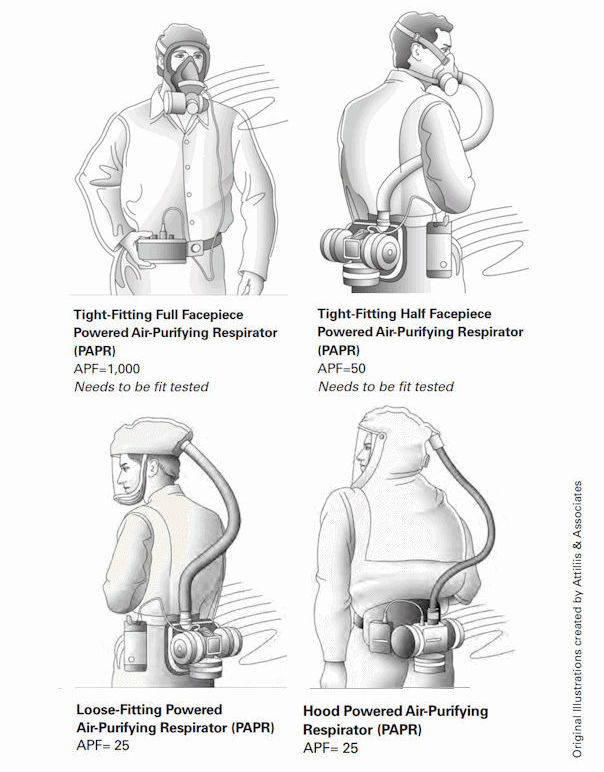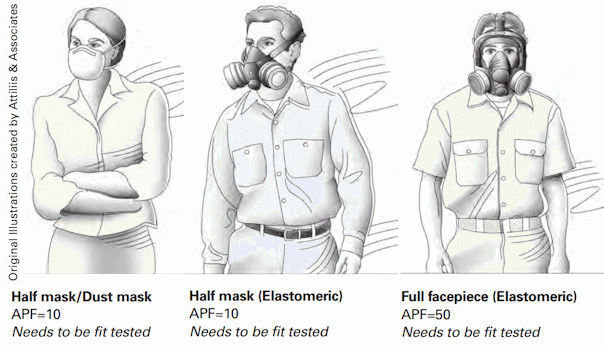Positive and Negative-Demand Respirators
SCBAs, SARs, and air-purifying respirators are further differentiated by the type of air flow supplied to the facepiece.
Types of Respirators
Positive-pressure respirators maintain a positive pressure in the facepiece during both inhalation and exhalation. The two main types of positive-pressure respirators are pressure-demand and continuous flow.
- Pressure-demand respirators use a pressure regulator and an exhalation valve on the mask to maintain the mask's positive pressure except during high breathing rates. If a leak develops in a pressure-demand respirator, the regulator sends a continuous flow of clean air into the facepiece, preventing penetration by contaminated ambient air.
- Continuous-flow respirators (including some SARs and all powered air purifying respirators [PAPRs]) send a continuous stream of air into the facepiece. With SARs, the continuous flow of air prevents infiltration by ambient air but uses the air supply much more rapidly than with pressure-demand respirators.
- Powered air-purifying respirators (PAPRs) are operated in a positive- pressure continuous-flow mode utilizing filtered ambient air. (However, at maximal breathing rates, a negative pressure may be created in the facepiece of a PAPR.)
When atmosphere-supplying respirators are used for work at hazardous waste sites, only those operated in the positive-pressure mode are recommended.
Negative-pressure respirators draw air into the facepiece via the negative pressure created by user inhalation. The main disadvantage of negative pressure respirators is if any leaks develop in the system (i.e., a crack in the hose or an ill-fitting mask or facepiece), the user draws contaminated air into the facepiece during inhalation.
Facepieces
Different types of facepieces are available for use with the various types of respirators. The types generally used at hazardous waste sites are full facepieces and half masks.
- Full-facepiece masks cover the face from the hairline to below the chin. They provide eye protection.
- Half masks cover the face from below the chin to over the nose and do not provide eye protection.
Approved Respirators
Federal regulations require the use of respirators which have been tested and approved by the Mine Safety and Health Administration (MSHA) and NIOSH. Approval numbers are clearly written on all approved respiratory equipment; however, not all respiratory equipment marketed is approved. Periodically, NIOSH publishes a list, entitled NIOSH Certified Equipment List of all approved respirators and respiratory components.
Knowledge Check Choose the best answer for the question.
1-4. When atmosphere-supplying respirators are used for work at hazardous waste sites, only those operated in the _____ mode are recommended.
You forgot to answer the question!


